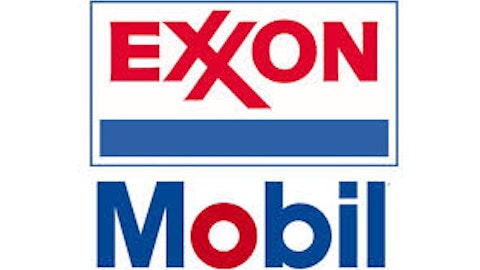
Energy XXI is an oil-rich Gulf of Mexico shelf producer focused on legacy assets acquired at a discount to their residual value. The company’s made a series of savvy buys leading to impressive production and reserve growth. Yet, problems have emerged as Energy XXI (Bermuda) Limited (NASDAQ:EXXI) battles top get all of its capacity online following its most recent large acquisition.
It dropped sharply after reporting its quarterly numbers. Production averaged 44.6 MBOEd, exiting the quarter at 47 MBOEd. Capacity sat at 52 MBOEd, with a large amount of that capacity again shut-in for repairs. Shut-ins earlier attributed to Hurricane Isaac seem to continue to hamper efforts to ramp production.
Management was more expansive about the persistently shut-in production this quarter. Isaac’s impact masked a problem that’s more chronic than many investors knew, and XXI may struggle with it for a while. That’s taxed shares, and falling oil prices have only exacerbated their softness.
The shut-ins mask some excellent gains from Energy XXI’s horizontal drilling program. While more common onshore, horizontal drilling is also effective on many of the offshore conventional fields it bought from Exxon Mobil Corporation (NYSE:XOM), because the fields are so uncommonly flat.
Long ago, Exxon gave horizontals a try on these fields with mixed, mostly inferior results. When fields transfer, operational data transfers as well. Energy XXI (Bermuda) Limited (NASDAQ:EXXI) noticed that Exxon Mobil Corporation (NYSE:XOM)’s few successful horizontals employed a common completion method. That encouraged XXI to restart a horizontal program using that completion strategy with excellent results so far.
So why is production growing slower than anticipated?
Energy XXI has to massage these old facilities to accommodate the production increases. Production declines from their heyday leave many of these wells producing predominantly water. In an oil reservoir, natural gas floats on the oil, and the oil floats on water. As the reservoir is depleted, the oil pocket shrinks and water begins to flow from the well in larger and larger amounts.
While handling all that water can be difficult, the nice thing is that the water production keeps reservoir pressure up, sweeping the reservoir. The strong water drive means that the field continues to produce oil, even if it is only 30% of the fluids coming up pipe. That’s why these fields can produce long into the future, and still provide significant residual value to smaller E&Ps like Energy XXI.
You need to be able to handle the water volume, though. Luckily, these old Exxon facilities were designed for much larger volumes of oil than they currently produce, so XXI has plenty of storage and treatment capacity. And because these are Gulf platforms, cleaned up water can simply be sent overboard after treatment.
The problem is the added capacity from the horizontal program has taxed all the creaky, old production equipment beyond its limits. The result has been breakdowns and shut-in production. Unfortunately, that means that XXI expects to run under capacity by roughly 10% for the foreseeable future as they plug leaks and swap out components. The Isaac shut-ins masked a more chronic, persistent problem.
Eventually, they should be able to replace much of that aging equipment and close the gap between capacity and actual production. Guidance is for flat production in 2014, with an incremental increase in 2015.
Two dry wells added insult to injury. Doctor O missed its target, and Sparkplug had to be abandoned when a mistake by a rig worker dropped a tool into the hole. Two more, Pi and Cake were successful, but produced mostly gas. Both are now producing liquids as expected, but drawing off their surprise gas caps nicked cash flow for the quarter.
To make matters worse, Davy Jones, the problem child of the Ultradeep joint venture (JV) with Mcmoran Exploration Co (NYSE:MMR) continued its temper tantrums. Mcmoran Exploration Co (NYSE:MMR) pulled its rig off the well to allow yet another fracture attempt to get the cantankerous well producing. Analysts are beginning to openly question the wisdom of continuing to pour good money down this billion dollar hole. That’s a bad sign for this once popular, high profile program.


